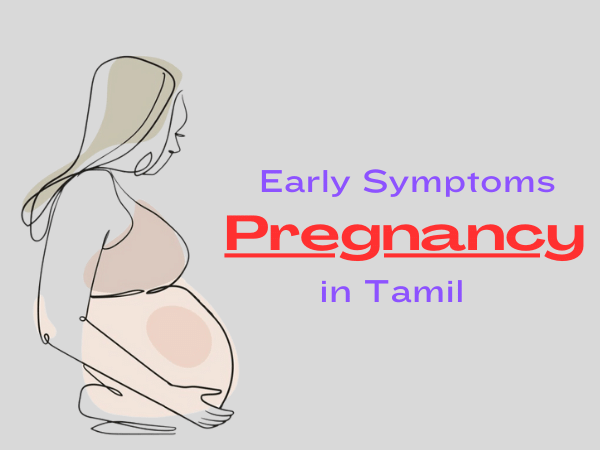Ultrasound, also known as sonography and USG Scan, come in, has become an integral part of prenatal care for expectant mothers. This non-invasive imaging technique uses high-frequency sound waves to create real-time images of the developing fetus in the womb.
It provides valuable information about the health and well-being of both the mother and the baby. Ultrasound has revolutionized prenatal care by allowing healthcare providers to monitor fetal development, detect potential complications, and guide medical interventions when necessary.
In this article, we will explore ‘usg for fpp in pregnancy’ the benefits and safety of ultrasound in prenatal care, highlighting its role in monitoring fetal development, diagnosing complications, assessing growth, and guiding medical interventions.

Table of Contents
usg for fpp in pregnancy Monitoring Fetal Development
One of the primary benefits of ultrasound in prenatal care or usg for fpp in pregnancy is its ability to monitor fetal development. Ultrasound USG scans provide detailed images of the fetus, allowing healthcare providers to assess its growth, anatomy, and overall well-being. By tracking the baby’s growth.
Doctors can ensure that it is developing at a healthy rate and identify any potential issues early on. For example, ultrasound can help detect abnormalities in the baby’s organs, spine, or limbs, enabling healthcare providers to plan appropriate interventions or treatments.
Furthermore, ultrasound scans can also reveal vital information about the baby’s position in the womb. This is particularly important as it helps determine whether the baby is in the optimal position for a safe and smooth delivery. By identifying the baby’s position, healthcare providers can make informed decisions regarding the mode of delivery, such as whether a cesarean section is necessary.
Ensuring the Safety of usg for fpp in pregnancy
Safety is of utmost importance in any medical procedure, particularly during pregnancy. Thankfully, ultrasound is considered a secure method for both the mother and the baby.
Studies have demonstrated that ultrasound has no negative impact on the development of the fetus or its long-term health. The American College of Obstetricians and Gynecologists (ACOG) has affirmed that there is no proof indicating any harm caused by ultrasound exposure during pregnancy.
However, it is important to note that ultrasound should be used cautiously and only when medically necessary. Healthcare providers follow established guidelines to ensure that the benefits of ultrasound outweigh any potential risks. They limit the duration and intensity of ultrasound exposure to minimize any potential effects.
The role of ultrasound in diagnosing pregnancy complications.
In the usg for fpp in pregnancy Another crucial role of ultrasound in prenatal care is its ability to detect and diagnose potential complications during pregnancy. Ultrasound scans can identify conditions such as ectopic pregnancies, placenta previa, or multiple pregnancies (twins, triplets, etc.). These conditions require careful monitoring and management to ensure the health and safety of both the mother and the baby.
For instance, an ectopic pregnancy occurs when the fertilized egg implants outside the uterus, usually in the fallopian tube. Ultrasound can help detect this condition early on.
usg for fpp in pregnancy for fetal growth and development
Ultrasound is vital in evaluating the progress of a fetus and its development during pregnancy. Healthcare professionals can estimate the weight of the baby and monitor its growth by measuring different aspects like head circumference, abdominal circumference, and femur length.
Detecting any deviations from the anticipated growth patterns can help identify potential problems like intrauterine growth restriction (IUGR) or excessive fetal growth (macrosomia).
IUGR occurs when the baby fails to grow at a normal rate, which can lead to complications such as low birth weight and developmental delays. On the other hand, macrosomia increases the risk of birth injuries and complications during delivery.
usg for fpp in pregnancy for Guiding Medical Interventions
In addition to monitoring fetal development and diagnosing complications, usg for fpp in pregnancy also serves as a valuable tool for guiding medical interventions.
For example, during amniocentesis or chorionic villus sampling (CVS), ultrasound is used to guide the needle to the correct location, minimizing the risk of injury to the baby or the mother.
This ensures accurate sampling of fetal cells or amniotic fluid for genetic testing, providing valuable information about the baby’s health and potential genetic conditions.
Different Types of Ultrasound Scans Used in Prenatal Care
There are several types of ultrasound scans used in prenatal care, each serving a specific purpose. The most common type is the transabdominal ultrasound, where a transducer is placed on the mother’s abdomen to obtain images of the fetus.
Another type of ultrasound is the transvaginal ultrasound, which involves inserting a transducer into the vagina to obtain clearer images during early pregnancy. This type of ultrasound is often used in the first trimester to confirm the pregnancy, assess the baby’s heartbeat, and detect any potential abnormalities.
Additionally, specialized ultrasound scans, such as the Doppler ultrasound, can assess blood flow in the umbilical cord and other vital organs. This helps healthcare providers evaluate the baby’s well-being and detect any signs of fetal distress.
Frequently asked question
What is USG for FPP in pregnancy?
USG stands for Ultrasound, and FPP stands for Fetal Presentation and Position. It is a medical procedure that uses sound waves to create images of the fetus in the womb and determine its position and presentation.
Why is USG for FPP important during pregnancy?
USG for FPP is important because it helps healthcare providers determine the position of the fetus in the womb, specifically whether the baby is in a head-down position (cephalic) or breech (bottom-first) position.
How is USG for FPP performed?
During the procedure, a trained technician or doctor will use a handheld device called a transducer to gently glide over the abdomen. The transducer emits sound waves that bounce off the baby's body and create images on a monitor. These images will show the baby's position and presentation.
Is USG for FPP safe for the baby and the mother?
Yes, USG for FPP is considered safe for both the baby and the mother. It uses non-ionizing radiation (sound waves) instead of X-rays, which makes it a low-risk procedure.
What can be determined through USG for FPP?
USG for FPP can determine the following:- Fetal position: Whether the baby is in a cephalic (head-down) or breech (bottom-first) position
Whether the baby is facing head-down or head-up, Whether the baby's head is engaged in the pelvis or still floating.
What happens if the baby is in a breech position?
If the baby is in a breech position, healthcare providers may discuss options for attempting to turn the baby into a head-down position. This can include techniques such as external cephalic version (ECV) or recommending a cesarean section for delivery.
Can the baby's position change after USG for FPP?
Yes, the baby's position can change even after USG for FPP. It is not uncommon for babies to move frequently during pregnancy, especially up until around 36 weeks. Therefore, a follow-up scan may be recommended if there are concerns about the baby's position.
Are there any risks or side effects associated with USG for FPP?
USG for FPP is generally considered safe and does not have any known risks or side effects for the baby or the mother. It is a non-invasive procedure that does not involve exposure to harmful radiation.
Conclusion:
Ultrasound in usg for fpp in pregnancy has revolutionized prenatal care by providing valuable information about fetal development. Diagnosing potential complications, and guiding medical interventions.
Usg for fpp in pregnancy is non-invasive nature and proven safety make it an essential tool for healthcare providers in ensuring the health and well-being of both the mother and the baby.
By monitoring fetal growth, ultrasound scans help identify potential issues early on, allowing for timely interventions and appropriate care. They also play a crucial role in diagnosing complications such as ectopic pregnancies or placenta previa, enabling healthcare providers to manage these conditions effectively.
As expectant mothers, it is important to embrace the benefits and safety of ultrasound in prenatal care. By working closely with healthcare providers and following their recommendations, expectant mothers can ensure the best possible outcomes for their pregnancies.







